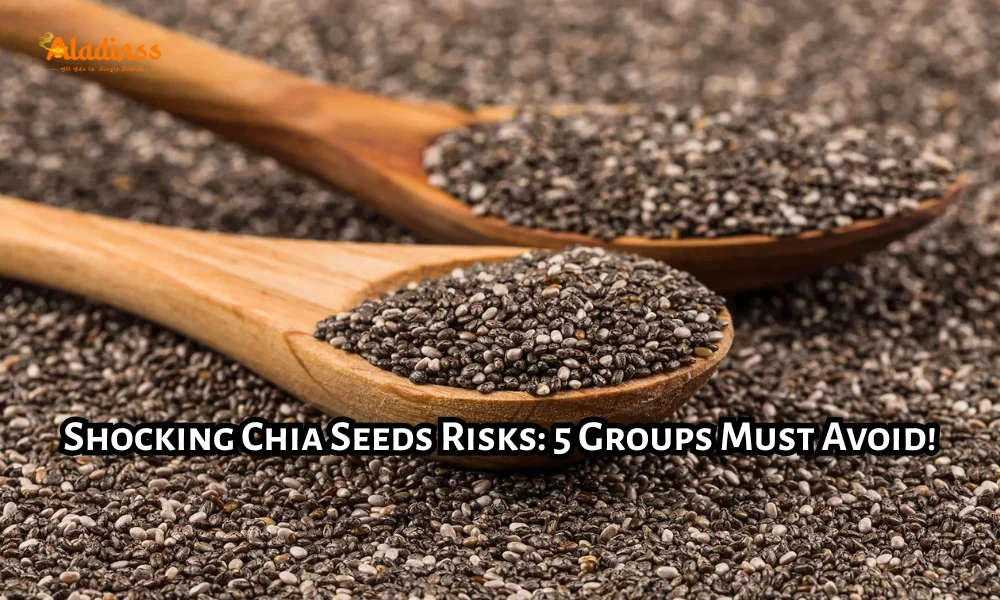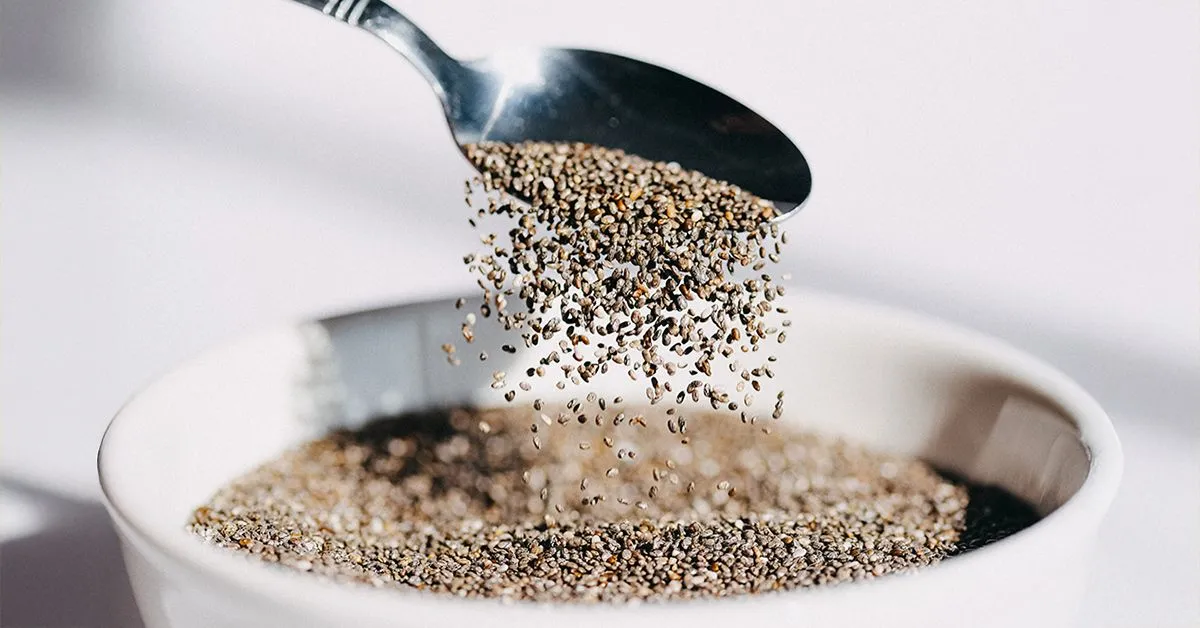Doctor Warns 5 Groups to Avoid Chia Seeds Immediately

Doctor Issues Urgent Warning: 5 Groups Must Avoid Chia Seeds Now
Chia seeds have surged in popularity as a superfood packed with fiber, omega-3 fatty acids, and essential minerals. Health enthusiasts add them to smoothies, yogurt, and overnight oats for better digestion and heart support. Yet, a leading gastroenterologist cautions that these tiny seeds can trigger serious issues for certain individuals. Dr. Pranav Srinivasan from Fortis Hospital, Bengaluru, emphasizes that overconsumption or ignoring personal health conditions may turn this nutritious item into a hidden risk.
While chia seeds promote gut wellness and sustained energy, they demand careful intake. The seeds swell dramatically in liquid, forming a thick gel that aids satiety but can overwhelm sensitive systems. Experts recommend starting with just one teaspoon daily and monitoring reactions closely. For vulnerable groups, even small amounts might spark discomfort or complications.

Safe Daily Intake of Chia Seeds
Nutritionists suggest 1 to 2 teaspoons of chia seeds per day for most adults. This modest portion delivers fiber without overloading the digestive tract. Soak the seeds in water or milk for 10-15 minutes before eating to activate the gel formation and ease absorption. Pregnant women, athletes, or those seeking weight management may tolerate slightly higher amounts, but always under medical guidance.
Dr. Srinivasan notes that the outer mucilage layer absorbs 10-12 times its weight in fluid, creating a viscous mass that slows digestion. This property curbs hunger and stabilizes blood sugar, yet it explains why excess intake leads to bloating or cramps in sensitive users.
1. Individuals Prone to Gas, Bloating, or IBS
High soluble fiber in chia seeds ferments in the gut, producing gas for those with irritable bowel syndrome or weak digestion. Starting on an empty stomach intensifies the effect, causing abdominal distension or painful cramps. Begin with half a teaspoon mixed in food and stop if discomfort arises. Gradual introduction allows the microbiome to adapt without shock.
Clinical observations show that patients with slow gut motility experience constipation when fiber intake spikes suddenly. Hydrate well—drink at least 8 glasses of water daily—to help fiber move smoothly through the intestines. Probiotics alongside chia seeds sometimes ease transition for bloating-prone individuals.
Real-life cases highlight the risk: a 35-year-old fitness trainer developed severe bloating after adding two tablespoons of dry chia seeds to morning shakes. Symptoms resolved within days after reducing to one soaked teaspoon. Monitoring bowel patterns remains crucial during the first two weeks of incorporation.
2. People Managing Low Blood Pressure
Alpha-linolenic acid and potassium in chia seeds naturally lower blood pressure. For hypotensive patients, this amplifies dizziness, fatigue, or fainting spells. Measure blood pressure weekly if consuming daily. Limit intake to half a teaspoon and pair with sodium-rich meals to counterbalance effects.
A study in the Journal of Nutrition linked omega-3 intake to a 3-5 mmHg drop in systolic pressure. While beneficial for hypertension, the same mechanism threatens those already below 90/60 mmHg. Elderly individuals on multiple medications face compounded risks, requiring cardiologist approval before adding chia seeds.
Symptoms like lightheadedness upon standing signal excessive intake. Reduce immediately and incorporate electrolyte drinks. Long-term users report stable pressure when capping at one teaspoon and spacing consumption across meals rather than a single dose.
3. Patients on Blood-Thinning Medications
Omega-3 fatty acids exhibit mild anticoagulant properties, potentially intensifying warfarin, aspirin, or clopidogrel effects. This raises bleeding risks during surgery or injury. Inform your hematologist before including chia seeds in your diet. Regular INR monitoring prevents dangerous fluctuations.
Case reports document prolonged bleeding in post-operative patients who consumed chia pudding daily. Vitamin K inconsistency from varying seed batches further complicates warfarin dosing. Safer alternatives like flaxseed oil capsules offer controlled omega-3 without fiber-related interactions.
Pharmacists advise a two-hour gap between blood thinners and high-omega-3 foods. Small trials confirm that 1 teaspoon poses minimal risk, but exceeding 2 teaspoons demands bloodwork. Personalized plans ensure cardiovascular benefits without hemorrhagic threats.
4. Those with Seed or Nut Allergies
Cross-reactivity with sesame, flax, or mustard seeds triggers hives, swelling, or anaphylaxis in susceptible people. Perform a patch test or consult an allergist first. Early signs include itchy throat, lip tingling, or respiratory distress—seek emergency care immediately.
Allergy databases report rare but severe reactions, especially in children with multiple sensitivities. Processing facilities handling various seeds heighten contamination risks. Opt for certified single-origin packs and read labels meticulously. Alternatives like sunflower seeds often prove safer for similar nutrient profiles.
A 28-year-old woman experienced facial swelling after her first chia smoothie; epinephrine reversed the episode. Subsequent skin-prick tests confirmed cross-reactivity with flax. Education on epinephrine auto-injectors empowers at-risk individuals to explore superfoods cautiously.
5. Patients with Chronic Kidney Disease
Elevated potassium and phosphorus strain impaired kidneys, worsening hyperkalemia or bone disorders. Dialysis patients must restrict to doctor-approved traces. Low-oxalate chia variants exist but still require nephrologist oversight.
Renal dietitians calculate that 1 tablespoon delivers 15% of daily phosphorus limits for stage 4 CKD. Boiling and discarding water leaches minerals, reducing load by 30%. Plant-based protein from chia appeals to vegetarians, yet portion precision prevents electrolyte imbalance.
Longitudinal data links uncontrolled phosphorus to cardiovascular events in kidney patients. Tailored meal plans incorporating soaked chia in soups maintain variety without jeopardizing filtration rates. Regular blood tests guide safe inclusion thresholds.
How the Gel Formation Works
Polysaccharides on the seed coat hydrate rapidly, expanding into a mucilaginous matrix. This viscoelastic gel coats the stomach lining, delaying gastric emptying and promoting fullness. Satiety hormones like GLP-1 rise, aiding portion control for weight loss seekers.
In the colon, the gel ferments into short-chain fatty acids, nourishing beneficial bacteria. Improved microbial diversity correlates with reduced inflammation markers. However, rapid expansion in narrow esophageal passages once caused obstruction—always chew or pre-soak thoroughly.
Food scientists measure swelling capacity at 27 mL/g, far exceeding psyllium. This property inspires low-calorie puddings and vegan egg substitutes. Culinary innovation expands applications while underscoring hydration needs during consumption.
Practical Tips for Safe Consumption
Grind seeds for better nutrient absorption if digestion allows. Store in cool, dark places to prevent rancidity of delicate oils. Combine with vitamin C-rich fruits to enhance iron uptake. Rotate with quinoa or hemp for balanced micronutrients.
Travelers carry pre-soaked portions in sealed containers. Athletes time intake post-workout for muscle recovery without gastrointestinal distress. Children under 5 should avoid whole seeds due to choking hazards—use ground form sparingly.
Sustainable sourcing supports biodiversity in native Mexican regions. Organic certification minimizes pesticide residues. Batch testing ensures low heavy metal content, critical for daily consumers. Transparent supply chains build consumer trust amid superfood hype.
Scientific Backing and Future Research
Meta-analyses confirm fiber benefits for cholesterol management, yet highlight dose-dependent adverse effects. Randomized trials explore gel viscosity impacts on glycemic control in diabetics. Longitudinal studies track kidney function in moderate consumers versus abstainers.
Emerging research examines anti-inflammatory peptides within chia protein. Genetic variations in fiber metabolism may explain individual tolerances. Personalized nutrition apps could soon predict safe dosages based on gut microbiome sequencing.
Global dietary guidelines evolve to include cautionary notes for high-fiber additions. Public health campaigns stress medical consultation over social media trends. Balanced reporting prevents superfood backlash while preserving evidence-based enthusiasm.
Final verdict: Chia seeds offer remarkable nutrition when matched to individual physiology. The five at-risk groups must prioritize professional advice over general recommendations. Mindful integration unlocks benefits; reckless adoption invites avoidable harm.
Comment / Reply From
No comments yet. Be the first to comment!






